Hand tattoos have been around for centuries, with evidence of their existence dating back to ancient civilizations. In the past, hand tattoos were often associated with certain cultures, religions, or social status.
For example, in some Native American tribes, hand tattoos were used to signify one's rank or achievements within the community.
In recent years, hand tattoos have gained popularity among a wider audience, becoming a trendy and stylish choice for people from all walks of life.
Celebrities, artists, and everyday individuals alike have embraced the bold and expressive nature of hand tattoos, using them to showcase their personality, beliefs, and creativity.
Despite their growing popularity, hand tattoos remain a somewhat controversial choice due to their high visibility and potential impact on employment opportunities.
Many workplaces still have strict policies against visible tattoos, particularly on the hands and face, which can limit career options for those with hand tattoos.

However, as attitudes towards tattoos continue to shift and become more accepting, more and more people are choosing to express themselves through hand tattoos.
Whether it's a small, subtle design or a bold, intricate piece, hand tattoos offer a unique and personal way to showcase one's individuality and creativity.
The purpose of this guide is to provide a comprehensive overview of hand tattoos, including their history, styles, placement options, and important considerations before getting inked.
Whether you're a tattoo enthusiast considering a hand tattoo or simply curious about this growing trend, this guide will provide you with all the information you need to make an informed decision and achieve the hand tattoo of your dreams.
From choosing the right design and artist to caring for your new tattoo and navigating the social and professional implications of visible ink, we'll cover all the essential aspects of hand tattoos. So, let's dive in and explore the world of hand tattoos together!
Considerations Before Getting a Hand Tattoo
Before taking the plunge and getting a hand tattoo, it's crucial to carefully consider various factors that come with this unique and visible placement.
Hand tattoos are not for the faint of heart, as they come with their own set of challenges and implications.
In this section, we'll explore the key considerations you should keep in mind before committing to a hand tattoo, including visibility and potential impact on employment, pain level, healing process, and longevity.
Visibility and Potential Impact on Employment

One of the most significant considerations when it comes to hand tattoos is their high visibility. Unlike tattoos on other parts of the body that can be easily covered with clothing, hand tattoos are almost always on display.
This visibility can have both positive and negative implications, depending on your personal and professional circumstances.
In terms of employment, it's important to recognize that many workplaces still have strict policies against visible tattoos, particularly on the hands and face.
While attitudes towards tattoos have become more accepting in recent years, some industries and professions may still view hand tattoos as unprofessional or inappropriate. Before getting a hand tattoo, consider your current and future career goals and whether visible ink could potentially limit your opportunities.
If you work in a creative field or have a more lenient workplace, a hand tattoo may not be an issue. However, if you're in a more conservative industry or plan to pursue a career that requires a professional appearance, it's essential to weigh the potential consequences of a hand tattoo.
In some cases, it may be wise to opt for a more discreet placement or wait until you're established in your career before getting inked on your hands.
That being said, the visibility of hand tattoos can also be a positive thing for those who want to express themselves and showcase their individuality.
A well-designed and meaningful hand tattoo can be a great conversation starter and a way to connect with others who appreciate body art.
Ultimately, the decision to get a hand tattoo is a personal one that requires careful consideration of your unique circumstances and priorities.
Pain Level Compared to Other Tattoo Locations

Another important factor to consider before getting a hand tattoo is the pain level involved. Many people wonder how painful hand tattoos are compared to tattoos on other parts of the body, and the answer is that they can be quite painful.
The hands are a sensitive area with thin skin and many nerve endings, which can make the tattooing process more intense and uncomfortable.
The pain level can vary depending on the specific location on the hand, with areas like the fingers, knuckles, and palm being particularly sensitive.
That being said, pain tolerance is highly individual, and what may be excruciating for one person may be more manageable for another. If you have experience with tattoos on other parts of the body, you may have a better idea of how well you handle the pain.
However, even if you have a high pain tolerance, it's important to be prepared for the fact that hand tattoos can be more challenging to sit through.
To minimize discomfort during the tattooing process, it's essential to choose a reputable and experienced artist who is skilled in hand tattoos.
A good artist will work efficiently and carefully to minimize the time spent on the sensitive areas of the hand. They may also recommend using numbing creams or taking breaks as needed to make the experience more bearable.
Ultimately, the pain of a hand tattoo is temporary, and for many people, the end result is well worth the discomfort. However, it's important to be realistic about the pain involved and to carefully consider whether you're willing to endure it for the sake of your desired tattoo.
Healing Process and Challenges

The healing process for hand tattoos can be more challenging than for tattoos on other parts of the body, due to the constant use and exposure of the hands. It's important to be prepared for the unique challenges that come with healing a hand tattoo and to follow proper aftercare instructions to ensure the best possible results.
One of the biggest challenges with hand tattoo healing is the risk of infection. Because the hands are constantly in contact with various surfaces and substances, there is a higher risk of bacteria and other contaminants getting into the freshly tattooed skin.
To minimize this risk, it's crucial to keep the tattooed area clean and covered with a protective ointment and bandage for the first few days after getting inked.
Another challenge with hand tattoo healing is the tendency for the skin to dry out and crack, which can lead to scabbing and potential damage to the tattoo.
To prevent this, it's important to keep the skin moisturized with a fragrance-free, hypoallergenic lotion and to avoid picking at any scabs or flakes that may form.
The healing process for hand tattoos can also be more uncomfortable than for tattoos on other parts of the body, due to the constant movement and flexing of the hands.
It's important to be gentle with the tattooed area and to avoid any activities that may cause excessive friction or irritation, such as heavy lifting or contact sports.
Overall, the healing process for hand tattoos typically takes around 2-4 weeks, depending on the size and complexity of the tattoo.
During this time, it's essential to follow all aftercare instructions provided by your tattoo artist and to be patient with the healing process.
With proper care and attention, your hand tattoo should heal beautifully and provide you with a stunning and meaningful piece of body art.
Longevity and Fading of Hand Tattoos

One of the most common concerns people have about hand tattoos is their longevity and potential for fading over time. Because the hands are constantly exposed to various environmental factors and undergo frequent washing and use, hand tattoos are more prone to fading and wear than tattoos on other parts of the body.
The skin on the hands is also thinner and more delicate than the skin on other areas, which can make the tattoo ink more likely to spread or blur over time. This is particularly true for fine line or intricate designs, which may lose their definition and clarity as the tattoo ages.
To minimize fading and ensure the longevity of your hand tattoo, it's important to choose a skilled and experienced artist who uses high-quality ink and techniques.
A good artist will know how to create a design that will hold up well over time and will take into account the unique challenges of tattooing on the hands.
It's also important to take good care of your hand tattoo over the long term, by protecting it from excessive sun exposure and keeping the skin moisturized and healthy.
Using a high-SPF sunscreen on the tattooed area can help prevent fading and damage from UV rays, while regular use of a gentle, fragrance-free lotion can keep the skin supple and prevent cracking or dryness.
Despite these precautions, it's important to be realistic about the fact that hand tattoos may require touch-ups or refreshing over time to maintain their appearance.
This is particularly true for people who work with their hands or are exposed to harsh environmental conditions on a regular basis. However, with proper care and maintenance, a well-done hand tattoo can remain a beautiful and meaningful piece of body art for many years to come.
Choosing the Right Design
When it comes to hand tattoos, choosing the right design is crucial. The hands are a highly visible and expressive part of the body, and the tattoo you choose will be on display for all to see.
In this section, we'll explore some popular hand tattoo designs and their meanings, as well as tips for working with your tattoo artist to create a custom design that perfectly captures your vision.
Popular Hand Tattoo Designs and Their Meanings

There are countless options when it comes to hand tattoo designs, from small and minimalist to bold and intricate. Some popular choices include:
Words or phrases: Many people choose to tattoo meaningful words or phrases on their hands, such as "love," "hope," or "strength." These tattoos can serve as daily reminders or affirmations and can be a powerful way to express your values and beliefs.
Symbols: Other popular hand tattoo designs include symbols such as hearts, infinity signs, arrows, or anchors. These designs can hold personal meaning or represent important concepts like love, balance, direction, or stability.
Nature-inspired designs: Flowers, leaves, and animals are also common choices for hand tattoos. These designs can be small and delicate or bold and colorful, and can represent growth, beauty, or personal traits associated with certain creatures.
Geometric shapes: Abstract or geometric designs have become increasingly popular in recent years, particularly for hand tattoos. These designs can be simple or complex and can create a modern, edgy look.
Ultimately, the meaning of your hand tattoo will be unique to you and your personal story. Whether you choose a pre-existing design or work with an artist to create something custom, the most important thing is that the tattoo resonates with you on a deep level.
Small, Minimalist Designs

For those who want a subtle or understated hand tattoo, small and minimalist designs can be a great choice.
These tattoos are often simple and delicate, using thin lines or small, iconic symbols to create a meaningful yet discreet look.
Some popular minimalist hand tattoo designs include:
Dots or lines: Simple dot or line tattoos can be arranged in various patterns or configurations to create a unique and understated look. These designs can represent connection, alignment, or personal milestones.
Tiny symbols: Small, iconic symbols like hearts, stars, or moons can be tattooed on the fingers or other areas of the hand for a subtle yet meaningful look.
Initials or numbers: Tattooing the initials of a loved one or a meaningful date or number can be a simple yet powerful way to carry a personal story or memory with you.
The key to a successful minimalist hand tattoo is precision and placement. Because these designs are so small and delicate, it's important to choose a skilled and experienced artist who can create clean, crisp lines and ensure the tattoo is placed perfectly on the hand.
Bold, Statement Pieces

On the other end of the spectrum, some people choose to make a bold statement with their hand tattoos, opting for large, intricate designs that cover a significant portion of the hand.
These tattoos are not for the faint of heart and require a significant commitment in terms of time, pain, and aftercare.
Some popular bold hand tattoo designs include:
Full-hand designs: Tattoos that cover the entire hand, from the wrist to the fingertips, can create a striking and dramatic look. These designs often incorporate multiple elements and can tell a complex story or represent a significant life event.
Portrait tattoos: Tattooing a portrait of a loved one, idol, or personal hero on the hand can be a powerful way to carry their memory or influence with you. These tattoos require a high level of skill and detail to capture the likeness and essence of the subject.
Cultural or traditional designs: Bold hand tattoos can also draw inspiration from various cultural or traditional styles, such as Polynesian, Maori, or Native American designs. These tattoos often have deep symbolic meaning and can represent heritage, spirituality, or personal identity.
When considering a bold hand tattoo, it's important to choose a design that you will be happy with for years to come, as these tattoos are highly visible and can be difficult to cover or remove.
It's also crucial to choose an artist who has experience with large-scale hand tattoos and can create a design that flows well with the natural contours of the hand.
Traditional and Cultural Designs

Hand tattoos have a rich history in various cultures around the world, and many people choose to honor this tradition by getting a tattoo that reflects their heritage or cultural identity.
These designs often have deep symbolic meaning and can serve as a powerful way to connect with one's roots or express pride in one's background.
Some examples of traditional and cultural hand tattoo designs include:
Henna-inspired designs: In many Middle Eastern and South Asian cultures, henna is used to create intricate, temporary designs on the hands and feet for special occasions like weddings or festivals. These designs can be adapted into permanent tattoos for a beautiful and culturally significant look.
Tribal designs: Many indigenous cultures around the world have a long history of hand tattoos, often using bold, geometric designs to represent social status, spiritual beliefs, or personal accomplishments. These designs can be adapted and modernized for a meaningful and visually striking tattoo.
Religious symbols: For those who want to express their faith or spiritual beliefs, religious symbols like crosses, om symbols, or lotus flowers can be tattooed on the hand as a daily reminder of one's devotion.
When choosing a traditional or cultural hand tattoo design, it's important to do your research and ensure that you are respectful of the culture and meaning behind the tattoo.
Working with an artist who has experience with these types of designs can help ensure that the tattoo is authentic and culturally appropriate.
Placement Options on the Hand

Once you've chosen your hand tattoo design, the next step is to decide on the placement. The hands offer a variety of placement options, each with its own unique considerations and challenges.
Fingers
Finger tattoos have become increasingly popular in recent years, particularly for small, minimalist designs. The most common placement options for finger tattoos are:
Side of the finger: Tattooing along the side of the finger, either on the inside or outside, can create a subtle yet visible look. This placement is often used for small symbols or initials.
Knuckle: Tattooing on the knuckles, either on the top or bottom of the finger, can create a bold and edgy look. This placement is often used for words or phrases, with each letter tattooed on a different knuckle.
Fingertip: Tattooing on the pad of the fingertip can create a unique and subtle look, but this placement is particularly prone to fading and may require frequent touch-ups.
When considering a finger tattoo, it's important to keep in mind that these tattoos are particularly prone to fading and blurring over time, due to the constant use and exposure of the fingers.
It's also important to choose a design that will work well in a small, narrow space and to be prepared for a potentially more painful tattooing experience.
Knuckles
Knuckle tattoos have a long history in various subcultures and are often associated with a tough, rebellious image. The most common knuckle tattoo designs are words or phrases, with each letter tattooed on a different knuckle across both hands.
When considering a knuckle tattoo, it's important to keep in mind that these tattoos are highly visible and may be perceived as aggressive or confrontational in certain contexts.
It's also important to choose a word or phrase that you will be happy with for years to come, as knuckle tattoos are difficult to cover or remove.
Palm
Palm tattoos are a bold and unconventional choice that can create a unique and eye-catching look. These tattoos are often larger and more intricate than other hand tattoos, covering a significant portion of the palm and sometimes extending onto the fingers or wrist.
When considering a palm tattoo, it's important to keep in mind that these tattoos are particularly painful and prone to fading, due to the constant use and exposure of the palms.
It's also important to choose a design that will work well with the natural lines and creases of the palm and to be prepared for a longer and more intense tattooing session.
Back of the Hand
Tattoos on the back of the hand offer a larger, flatter canvas for more intricate or detailed designs. These tattoos can wrap around the entire hand or focus on a specific area, such as the center of the hand or the space between the thumb and forefinger.
When considering a tattoo on the back of the hand, it's important to choose a design that flows well with the natural shape and contours of the hand. It's also important to be prepared for a potentially more painful tattooing experience, as the skin on the back of the hand is thin and sensitive.
Working with Your Tattoo

Working with a skilled and experienced tattoo artist is key to creating a custom hand tattoo design that perfectly captures your vision and style. A good artist will take the time to listen to your ideas, offer suggestions and guidance, and create a design that is both meaningful and visually stunning.
When working with a tattoo artist to create a custom hand tattoo design, it's important to:
Come prepared with ideas and inspiration: Bring in photos, sketches, or other visual references that capture the style and feel you're going for. This will help your artist understand your vision and create a design that meets your expectations.
Be open to suggestions and feedback: Your tattoo artist is an expert in their field and may have ideas or suggestions for how to improve or refine your design. Be open to their feedback and trust their expertise in creating a tattoo that will work well on the hand.
Discuss placement and size: Work with your artist to determine the best placement and size for your tattoo, taking into account the natural shape and contours of your hand as well as the level of detail and intricacy in your design.
Be patient and flexible: Creating a custom tattoo design takes time and may require multiple revisions or adjustments. Be patient with the process and trust that your artist is working to create the best possible design for you.
Communicate openly and honestly: If there's something you don't like or want to change about the design, speak up and communicate openly with your artist. It's important that you're fully happy and confident with the design before committing to the tattoo.
Ultimately, working with a tattoo artist to create a custom hand tattoo design is a collaborative process that requires open communication, trust, and a shared vision.
By taking the time to find the right artist and work together to create a meaningful and visually stunning design, you can ensure that your hand tattoo is a true reflection of your personal style and story.
Preparing for Your Hand Tattoo
Getting a hand tattoo is a significant decision that requires careful preparation and planning. From researching and selecting a reputable tattoo artist to properly caring for your skin before the appointment, there are several important steps to take to ensure the best possible outcome.
In this section, we'll guide you through the process of preparing for your hand tattoo, including what to expect during the tattooing process itself.
Researching and Selecting a Reputable Tattoo Artist

One of the most critical steps in preparing for a hand tattoo is finding a skilled and experienced tattoo artist who specializes in this type of work.
Hand tattoos are particularly challenging due to the delicate nature of the skin and the complex contours of the hand, so it's essential to choose an artist who has a proven track record of creating high-quality hand tattoos.
Start by researching tattoo studios and artists in your area, looking for those with a strong portfolio of hand tattoos.
Pay attention to factors such as the cleanliness and professionalism of the studio, the artist's level of experience and expertise, and the overall quality and style of their work.
It's also a good idea to read reviews and ask for recommendations from friends or family members who have gotten hand tattoos. Look for an artist who is not only skilled but also approachable, communicative, and willing to work with you to create a custom design that meets your needs and preferences.
Once you've narrowed down your options, reach out to the artist or studio to ask any questions you may have and to get a sense of their availability and pricing.
Don't be afraid to shop around and compare multiple artists before making a decision – this is a permanent addition to your body, so it's important to choose someone you feel fully confident and comfortable with.
Scheduling a Consultation

Before booking your hand tattoo appointment, it's a good idea to schedule a consultation with your chosen artist. This is an opportunity to discuss your design ideas in more detail, ask any questions you may have, and get a sense of the artist's process and approach.
During the consultation, be prepared to share any inspiration images or sketches you have, as well as your thoughts on size, placement, and style.
The artist will likely offer their own suggestions and feedback based on their expertise and experience with hand tattoos.
This is also a good time to discuss any concerns or questions you may have about the tattooing process, aftercare, or potential risks and complications.
A reputable artist will be happy to answer your questions and provide you with all the information you need to feel confident and prepared for your tattoo.
If you feel comfortable with the artist and their approach, you can then schedule your tattoo appointment and begin the process of preparing your hand for the big day.
Preparing Your Hand for the Tattoo

In the days and weeks leading up to your hand tattoo appointment, there are several steps you can take to ensure your skin is in the best possible condition for the tattooing process.
Moisturizing
One of the most important things you can do to prepare your hand for a tattoo is to keep the skin well-moisturized.
Dry, flaky, or irritated skin can make the tattooing process more difficult and painful, and can also affect the healing process and final appearance of the tattoo.
In the weeks leading up to your appointment, make sure to apply a high-quality, fragrance-free moisturizer to your hands several times a day, paying extra attention to the area where the tattoo will be placed.
Look for a moisturizer that is rich in hydrating ingredients like hyaluronic acid, glycerin, or shea butter, and avoid any products that contain alcohol or other drying agents.
Exfoliating
In addition to moisturizing, it's also a good idea to gently exfoliate your hands in the days leading up to your tattoo appointment.
This can help remove any dead skin cells or rough patches that may interfere with the tattooing process or affect the final appearance of the tattoo.
Look for a gentle, non-abrasive exfoliant that is suitable for sensitive skin, such as a sugar scrub or a chemical exfoliant like lactic acid or glycolic acid.
Avoid any exfoliants that contain harsh or irritating ingredients like microbeads or walnut shells, as these can damage the delicate skin on your hands.
Shaving (if necessary)
Depending on the location and size of your hand tattoo, you may need to shave the area before your appointment.
This is particularly important if you have thick or coarse hair on your hands, as this can interfere with the tattooing process and affect the final appearance of the tattoo.
If you do need to shave your hands, make sure to do so at least 24 hours before your appointment to allow any irritation or redness to subside.
Use a clean, sharp razor and a gentle, fragrance-free shaving cream or gel to minimize the risk of cuts or irritation.
What to Expect During the Tattooing Process

On the day of your hand tattoo appointment, it's normal to feel a mix of excitement and nervousness. Knowing what to expect during the tattooing process can help ease any anxiety and ensure a smooth and comfortable experience.
When you arrive at the tattoo studio, your artist will likely have you fill out some paperwork and go over the final design and placement of your tattoo.
They will then prepare the area by cleaning and shaving (if necessary) the skin and applying a stencil of the design to ensure proper placement.
Once the stencil is in place, the artist will begin the tattooing process.
This involves using a small, handheld machine to inject ink into the skin using a series of needles. The sensation of getting a hand tattoo can vary depending on the individual and the specific location of the tattoo, but most people describe it as a sharp, scratching or stinging sensation.
During the tattooing process, it's important to stay as still as possible and communicate openly with your artist if you need a break or are experiencing any discomfort. Most hand tattoos take between 1-3 hours to complete, depending on the size and complexity of the design.
After the tattoo is finished, the artist will clean and bandage the area and provide you with detailed aftercare instructions. It's important to follow these instructions carefully to ensure proper healing and minimize the risk of infection or other complications.
Overall, getting a hand tattoo can be a meaningful and transformative experience, but it's important to approach the process with care and preparation.
By taking the time to research and select a reputable artist, properly prepare your skin, and know what to expect during the tattooing process, you can ensure the best possible outcome for your new hand tattoo.
Aftercare and Healing
Proper aftercare is crucial for ensuring the best possible healing and longevity of your new hand tattoo.
In this section, we'll cover the essential steps you need to take to care for your tattoo in the days and weeks following your appointment, as well as what to expect during the healing process.
We'll also discuss potential complications to watch out for and how to address them, and provide tips for maintaining the appearance of your hand tattoo over time.
Essential Aftercare Steps

Immediately after getting your hand tattoo, your artist will clean and bandage the area to protect it from bacteria and other irritants. They will also provide you with detailed aftercare instructions, which it's important to follow carefully to ensure proper healing.
In general, the essential aftercare steps for a hand tattoo include:
Cleaning the Tattoo
For the first few days after getting your hand tattoo, you'll need to gently clean the area several times a day to prevent infection and promote healing.
Use a mild, fragrance-free soap and lukewarm water to gently wash the tattoo, being careful not to scrub or irritate the skin. Pat the area dry with a clean, soft towel, and avoid using any harsh or abrasive products on the tattoo.
Applying Moisturizer
After cleaning your hand tattoo, it's important to apply a thin layer of moisturizer to keep the skin hydrated and prevent excessive dryness or scabbing.
Look for a fragrance-free, hypoallergenic moisturizer that is specifically designed for tattoo aftercare, such as a tattoo balm or ointment. Avoid using any heavy or greasy products that could clog the pores and interfere with healing.
Protecting the Tattoo from Sun Exposure
Exposure to sunlight can cause your hand tattoo to fade or become discolored over time, so it's important to protect the area from the sun during the healing process and beyond.
Cover your tattoo with loose, breathable clothing when spending time outdoors, and apply a broad-spectrum sunscreen with an SPF of at least 30 once the tattoo has fully healed.
Signs of Proper Healing

In the days and weeks following your hand tattoo appointment, it's normal to experience some redness, swelling, and tenderness in the area. These symptoms should gradually subside as the tattoo heals, and you may notice some scabbing or peeling as the skin regenerates.
Here are some signs that your hand tattoo is healing properly:
The tattoo is no longer painful or tender to the touch
The redness and swelling have subsided
The scabs have fallen off naturally, revealing the healed tattoo underneath
The tattoo looks bright and vibrant, with no signs of fading or discoloration
It's important to note that the healing process for a hand tattoo can take several weeks or even months, depending on the size and complexity of the design.
During this time, it's crucial to continue following your aftercare instructions and avoiding any activities that could irritate or damage the tattoo, such as swimming or exposing the area to direct sunlight.
If you notice any signs of improper healing, such as excessive redness, swelling, or discharge, or if you experience any severe pain or discomfort, it's important to contact your tattoo artist or a healthcare professional right away.
Potential Complications and How to Address Them

While most hand tattoos heal without any major issues, there are some potential complications to be aware of and watch out for during the healing process.
Infection
One of the most serious potential complications of a hand tattoo is infection. Signs of infection may include severe redness, swelling, or pain in the area, as well as discharge or a foul odor.
If you suspect that your tattoo may be infected, it's important to seek medical attention right away to prevent the infection from spreading or causing further damage to the skin.
To reduce the risk of infection, make sure to follow your aftercare instructions carefully and avoid touching or picking at the tattoo. If you notice any signs of infection, contact your tattoo artist or a healthcare professional immediately.
Allergic Reactions
In rare cases, some people may experience an allergic reaction to the ink or other products used during the tattooing process. Symptoms of an allergic reaction may include severe itching, redness, or swelling in the area, as well as hives or difficulty breathing.
If you have a history of allergies or sensitive skin, it's important to discuss this with your tattoo artist before getting a hand tattoo. They may be able to recommend alternative inks or products that are less likely to cause a reaction.
If you do experience an allergic reaction to your hand tattoo, seek medical attention right away to prevent the reaction from worsening or causing further damage to the skin.
Excessive Scabbing or Peeling
While some scabbing and peeling is normal during the healing process for a hand tattoo, excessive scabbing or peeling can be a sign of improper healing or aftercare.
If you notice large, thick scabs forming on your tattoo, or if the skin is peeling excessively or unevenly, it's important to contact your tattoo artist for guidance. They may recommend adjusting your aftercare routine or using a different moisturizer to promote proper healing.
In some cases, excessive scabbing or peeling can lead to scarring or distortion of the tattoo design. If this occurs, you may need to schedule a touch-up appointment with your artist to correct any imperfections.
Touch-Ups and Maintenance

Even with proper aftercare and healing, it's not uncommon for hand tattoos to require touch-ups or maintenance over time.
This is because the skin on the hands is constantly exposed to friction, moisture, and other environmental factors that can cause the tattoo to fade or become distorted.
If you notice any fading, blurring, or other imperfections in your hand tattoo, it's a good idea to schedule a touch-up appointment with your artist. During this appointment, they can refresh the ink and make any necessary adjustments to the design to ensure that it looks its best.
To maintain the appearance of your hand tattoo over time, it's important to continue protecting the area from sun exposure and avoiding any activities that could cause excessive friction or irritation to the skin. You should also continue to moisturize the area regularly to keep the skin healthy and hydrated.
By taking good care of your hand tattoo and scheduling regular touch-ups and maintenance appointments as needed, you can help ensure that your tattoo remains a beautiful and meaningful addition to your body art collection for years to come.
Showcasing Your Hand Tattoo
Conclusion
In this comprehensive guide, we've covered everything you need to know about getting a hand tattoo, from choosing the right design and placement to preparing for the tattooing process and caring for your new tattoo afterwards.
We started by exploring the various design options for hand tattoos, including popular styles like minimalist designs, bold statement pieces, and traditional and cultural designs.
We also discussed the different placement options on the hand, including the fingers, knuckles, palm, and back of the hand, and the unique considerations and challenges of each location.
Next, we delved into the process of preparing for a hand tattoo, including researching and selecting a reputable tattoo artist, scheduling a consultation, and properly caring for your skin in the days and weeks leading up to your appointment.
We also discussed what to expect during the tattooing process itself, including the sensation of getting a hand tattoo and the importance of communicating openly with your artist.
Throughout this guide, we've emphasized the importance of careful consideration and planning when it comes to getting a hand tattoo.
These tattoos are highly visible and can have significant personal and professional implications, so it's essential to choose a design and placement that you'll be happy with for years to come.
We've also stressed the importance of proper aftercare and maintenance to ensure the best possible healing and longevity of your new hand tattoo.
By following the aftercare instructions provided by your artist and taking good care of your skin, you can help your tattoo look its best for years to come.
Getting a hand tattoo can be a meaningful and transformative experience, but it's not a decision to be taken lightly.
We encourage you to carefully consider all of the factors discussed in this guide, from the design and placement to the potential risks and challenges, before committing to a hand tattoo.
If you do decide to take the plunge and get a hand tattoo, we'd love to hear about your experience and see photos of your new ink.
Share your hand tattoo stories and photos with us on social media or via email, and help inspire others who may be considering a hand tattoo of their own.
Thank you for reading this guide, and we wish you all the best on your hand tattoo journey!
:: Perfect Tattoo Guide 2.0 ::
Are you standing on the edge of making a lifelong decision, contemplating your first tattoo with both excitement and trepidation?
The world of tattoos is as vast and varied as the designs that inhabit it, from the deeply personal to the purely aesthetic, from the traditional to the cutting-edge.
In our latest e-book, "Perfect Tattoo Guide 2.0," we delve into every aspect of tattoo culture, offering insights and answers for the tattoo-curious and aficionados alike.
Dive into the world of tattoos with our expertly crafted guide – every question answered, every myth debunked.
For those on the brink of getting their first tattoo, we understand the whirlwind of questions and uncertainties that come with it.
What should you know before getting inked? How do you choose the right artist? What about the health risks? And have you heard about the latest trend of invisible tattoos?
In this comprehensive e-book is your ultimate roadmap, priced at a modest $17. This guide encapsulates everything from essential pre-tattoo considerations to the latest in tattoo innovation, including:
Pre-Tattoo Primer: Essential knowledge before getting inked.
FAQs Unveiled: Clear answers to all your burning questions.
Cultural Tapestry: Exploring the global significance of tattoos.
Invisible Ink: A sneak peek into the future of tattoos.
Artist Selection: Tips for choosing an artist who matches your vision.
Trend Insights: The latest tendencies in the tattoo world.
Cosmetic Transformations: The realm of cosmetic tattoos.
Health Wisdom: Understanding the risks to keep your art safe.
By purchasing this e-book, you're not just acquiring a guide; you're supporting the creation of more free, high-quality content that enlightens and entertains.
Your support is invaluable to us, and it's a way to keep the art of knowledge-sharing alive and vibrant. Gain exclusive access to expert advice and insights that you won't find anywhere else.
This e-book is the result of extensive research and passion, tailored for both tattoo novices and aficionados.
Don't Miss Out! Grab Your Copy of "Perfect Tattoo Guide 2.0" for just $17 and transform your tattoo journey today. Click here to purchase and support our mission to deliver exceptional content. Your journey to tattoo enlightenment begins now.
Thank you for considering our e-book. Your support not only helps you navigate the world of tattoos with ease and confidence but also fuels our ability to continue providing valuable content. Together, let's keep the art of storytelling alive.
See More: ⤵
Nipple Tattoos: A Comprehensive Guide to Areola Reconstruction and Decorative Designs
Hip Tattoos: The Ultimate Guide to Choosing and Caring for Your Sexy Hip Ink
Divergent Tattoos: A Comprehensive Guide to Choosing, Placing, and Caring for Your Ink
Forearm Tattoos for Women: Styles, Inspiration, and Considerations
Sleeve Tattoos for Men: The Ultimate Guide to Designing and Rocking Your Ink














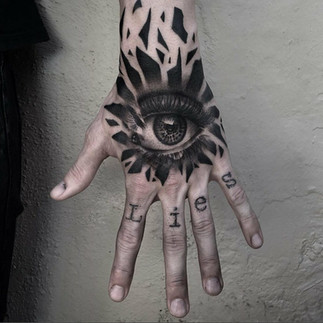






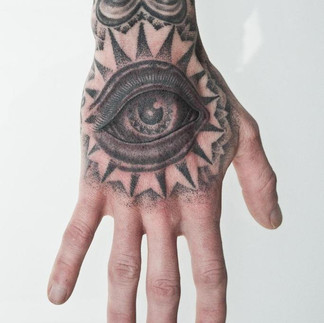







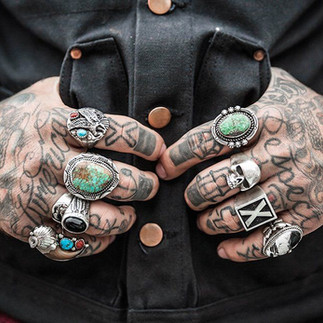











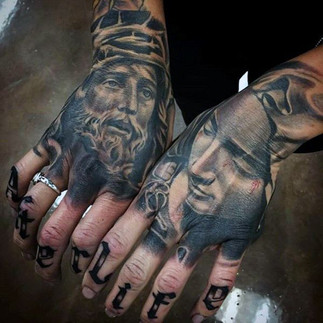












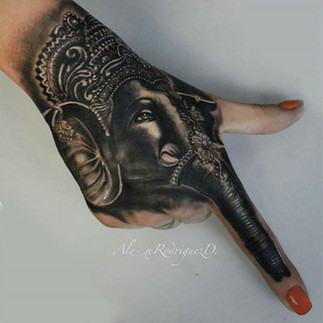





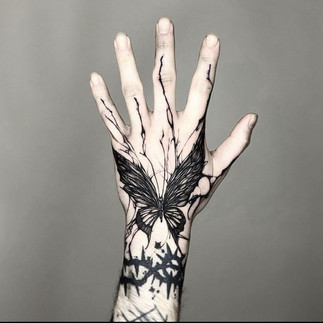




















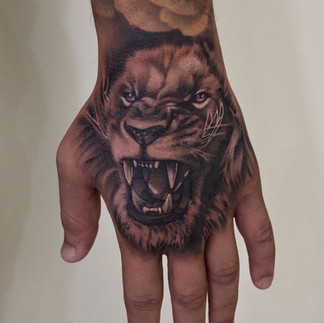



































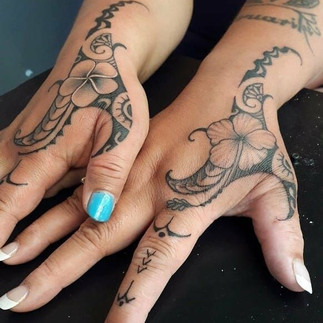



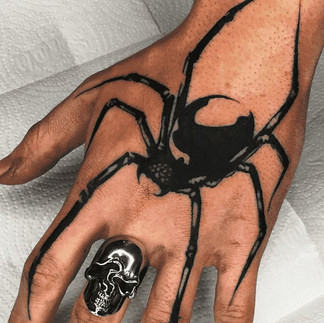

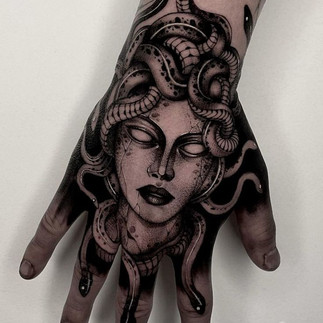































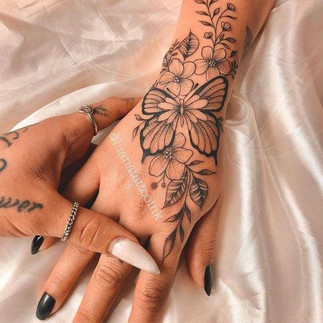
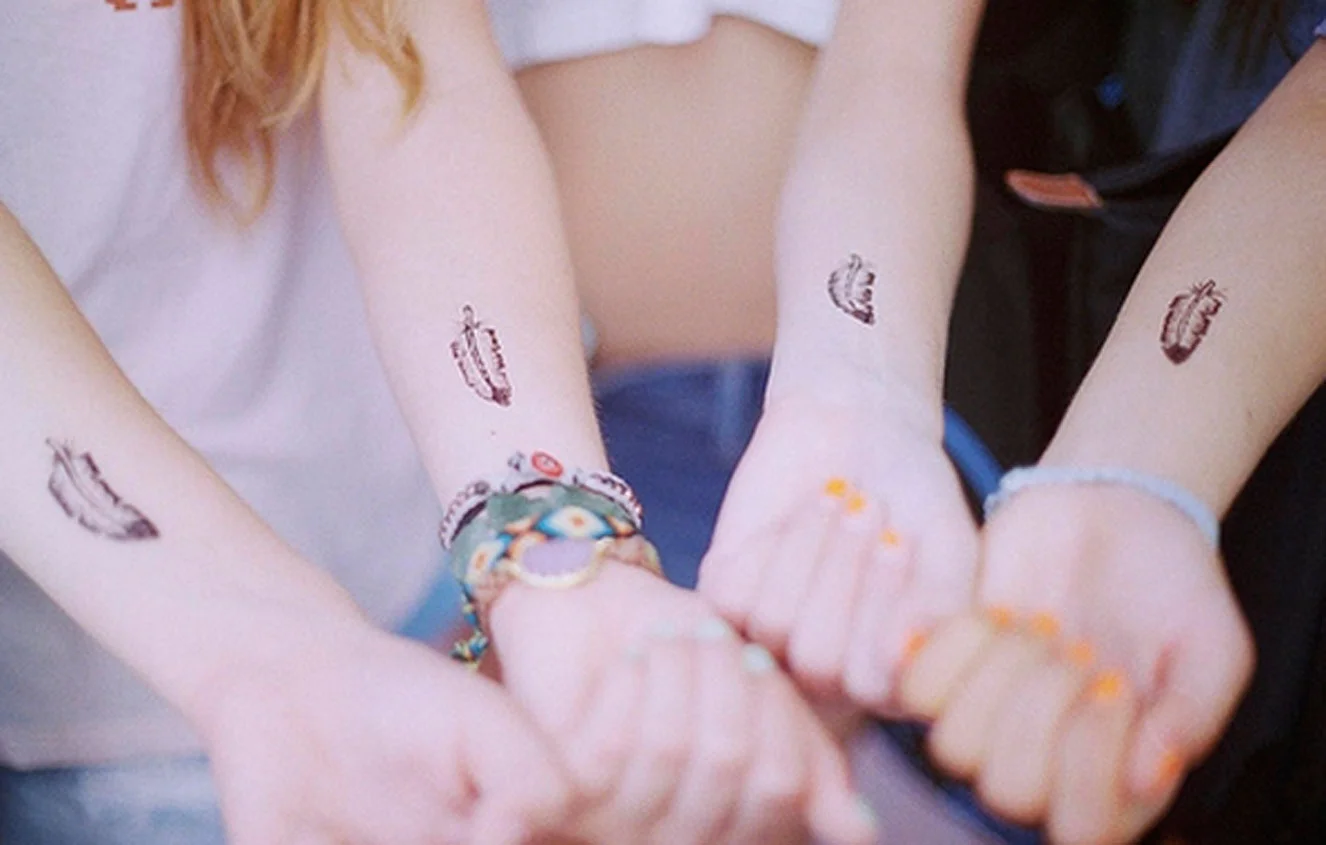





































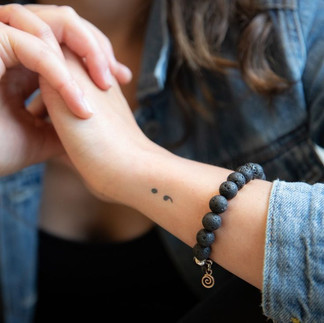




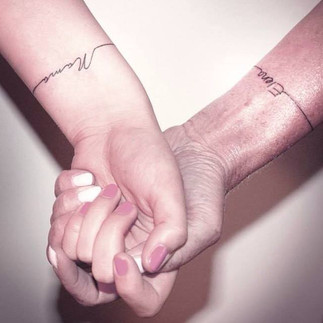





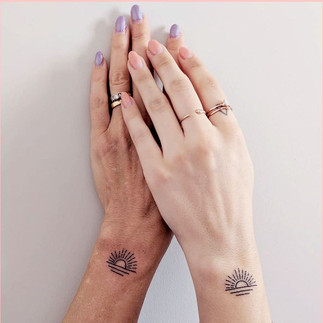

Comments